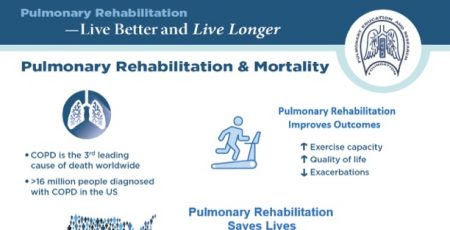
06 May Exercise During COVID-19: A Conversation
by Harry Rossiter and Nick Tiller
The COVID-19 pandemic continues to have a profound impact on our activity levels. It could be that working from home and/or self-isolation has reduced the amount of walking you normally do, or perhaps the closure of sports clubs has forced you to conjure new and inventive ways of achieving your daily exercise. Regardless of your usual level of activity, it’s likely that COVID-19 mitigation strategies (e.g., wearing face coverings, physical distancing, and lockdowns) have had a dramatic impact. This article captures a conversation between PERF Board members, Drs. Harry Rossiter and Nick Tiller, in which they discuss some important considerations for exercise in the age of COVID-19.
Nick: I think a good place to start is to reiterate the importance of regular exercise; not just for navigating the pandemic, but for maintaining general whole-body health. Why is it so important to be physically active?
Harry: Physical inactivity is an “actual cause” of chronic disease; it is one of the 3 most important things we can choose to do to support a healthy life (along with good nutrition and not smoking). There’s overwhelming evidence that regular physical activity and/or structured exercise training helps prevent numerous non-communicable diseases including cardiovascular disease, type II diabetes, and certain cancers. Exercise is also important for good mental health. The social component shouldn’t be overlooked, although this is clearly more difficult in the current climate where good physical distancing is paramount. We have a video on the PERF website that discusses some of the many benefits of regular physical activity.
Nick: Regular exercise is so important for good physical and mental health. I know of many people who participate in online group training sessions, which are great for improving physical health, but also partially replicate the social component of an exercise class. It’s worth noting that many patients with underlying health conditions are on regular medication to manage their disease: to improve cardiovascular health, lower blood pressure, lower cholesterol, increased insulin sensitivity and glucose tolerance, etc. Exercise can accomplish all of these things simultaneously. If there were a drug that could achieve that, its creator would be worthy of a Nobel Prize.
Harry: If only an “exercise pill” were not science fiction! We know that exercise is an important part of a healthy lifestyle, so why then do you think so few people meet the recommended 150 minutes of moderate-to-vigorous physical activity per week?
Nick: People struggle to forge new habits, especially when they don’t see immediate benefits. Humans are programmed to seek out the “quick fixes” and rapid results; hence the popularity of nutritional supplements and fad diets even though neither are as effective as a structured exercise program and healthy eating. Chronic lifestyle interventions are difficult and making them a habit takes time and perseverance, but it’s really worth it. Incidentally, PERF posted recently about a new study showing the benefits of eating 5 fruits and vegetables a day, and we have tips on diet choices for patients with COPD. But what about exercise? How can people go about beginning a new exercise regimen during the pandemic? Also, is there a risk that exercise will compromise immunity or increase their risk of catching the virus?
Harry: Increasing physical fitness through exercise training is beneficial for immune function, which may help reduce severe disease if one were to catch the virus; hence the importance of regular exercise. Similarly, physical inactivity is associated with chronic inflammation and a less effective immune system. Having said that, a single bout of vigorous exercise or “overtraining” can temporarily affect the immune system and increase susceptibility to infection. Data strongly demonstrate that a bout of vigorous endurance exercise – such as running a half marathon – results in a temporary increase in the risk of upper-respiratory-tract infection (URTI). For this reason, it may be a good idea to avoid marathons and triathlons for a while! Also, because it is important to avoid large crowds, avoiding events where many people are gathered is recommended for the time being.
Nick: So, is it true that the act of exercising around other people has inherent risks in terms of virus transmission?
Harry: Well, SARS-CoV-2 is an airborne virus. In general, I think there has been poor education on precisely what this means. It means that SARS-CoV-2 is primarily transmitted through the air as droplets and tiny particles that are secreted from the nose and mouth of an infected person. Coughs, sneezes, lung function testing, and exercise are all considered to be “aerosol-generating” events because the individual generates particles that are sufficiently small and light to remain suspended in the air for long periods, travel beyond 6 ft from the source, and penetrate or circumnavigate surgical masks. So, yes, exercising close to an infected person–especially in a confined space such as an indoor gym–can increase the risk of becoming infected.
Nick: So, to minimize the risk of infection when exercising, we should be following the normal public health guidance: exercise outdoors if possible, avoid exercising in groups, and, of course, wear a facemask.
Harry: Exactly. Facemasks are considered one of our primary tools in combating transmission. How do you feel when you exercise with a mask? Some people have expressed concern that this might be harmful.
Nick: They have, but the concerns are unfounded. There’s good evidence now showing that wearing a facemask during exercise is safe. In fact, two review articles, published in good quality medical journals by respiratory experts, independently concluded that exercising with a mask does not have any health implications and is likely safe even at higher exercise intensities, albeit slightly uncomfortable for the wearer. Having said that, high-intensity interval training with a sealed N95 is not much fun. Instead, wear a thick cloth or surgical mask during exercise and prioritize lower-intensity activity. It goes without saying that anyone who is considering changing or adding a new exercise regime to their schedule should have a discussion with their primary physician beforehand.
Harry: OK, so we’ve established that regular exercise is important for good physical and mental health and that facemasks aren’t a barrier to exercise. As the COVID-19 vaccine is rolled out, are there any concerns regarding how exercise might affect how people will respond to the vaccine?
Nick: Studies in the general population have shown heightened rates of vaccine efficacy (better effects), with an increased antibody titer, in individuals who did moderate-intensity exercise before vaccination. If anything, regular exercise might improve the immune response following vaccination. However, the data aren’t conclusive. One consideration is that some individuals do experience transient side effects following the vaccine, including lethargy, muscle aches, and mild fever, so it’s a good idea to avoid exercise during this time.





sarah braun
Posted at 13:38h, 11 MayMy O2 drops when wearing a mask WHILE ON O2. Please recognize this reality for many of us. For me, mask wearing leads to hospitalization. It is unconscionable to spread disinformation.
PERF
Posted at 16:14h, 13 MayDear Sarah,
Thank you for your comment. While I’m sorry you’ve had such difficulty wearing a mask, I’d have to disagree that this is at all a common problem. Well-executed scientific investigations have shown that wearing a cloth or paper mask does not lead to significant oxygen desaturation, much less hospitalization, even in people with respiratory disease. Of course, those having the sort of difficulties you are encountering should consult with their physician.
The good news for you is that mask wearing is becoming less necessary in a range of situations. I’ll assume that you’ve been fully vaccinated by now, as this is strongly recommended for those with lung disease and vaccination is now pretty freely available in the United States. For fully vaccinated individuals, the Centers for Disease Control (CDC) has recently revised their recommendations for mask wearing (https://www.cdc.gov/coronavirus/2019-ncov/vaccines/fully-vaccinated.html). These recommendations include:
• You can gather indoors with fully vaccinated people without wearing a mask or staying 6 feet apart.
• You can gather indoors with unvaccinated people of any age from one other household (for example, visiting with relatives who all live together) without masks or staying 6 feet apart, unless any of those people or anyone they live with has an increased risk for severe illness from COVID-19.
• You can gather or conduct activities outdoors without wearing a mask except in certain crowded settings and venues.
I hope this is of help to you.
Rich Casaburi, PhD, MD
President, PERF
Noah Greenspan
Posted at 04:17h, 01 FebruaryDr. Casaburi’s comments require no qualification but I would say the following: 1. If you are wearing supplemental oxygen UNDER the mask AND using an ADEQUATE liter flow, you should not be desaturating. If you are (and depending on your condition and a million other things), I would speak to your physician about turning up your oxygen during exercise (as high as you need to to remain saturated). As another alternative, you can try a non-rebreather mask which in addition to providing SOME protection will significantly increase the CONCENTRATION of oxygen in the air you will be breathing in. To be sure, an NRB does not offer the same protection to those around you so you could (and should) consider putting a surgical mask OVER the NRB. If you are referring to a pulmonary rehab scenario, all patients and staff should be appropriately masked, sessions sizes kept at appropriate size for safety and machines kept adequately spaced apart and then some. In our facility, we have rearranged our equipment into 4 separate “zones” in which patients have everything they need for a session. In addition, we are currently seeing 2-3 patients at a time in a space where we would have seen up to 12 per-COVID. Where there is a Will there’s a way.